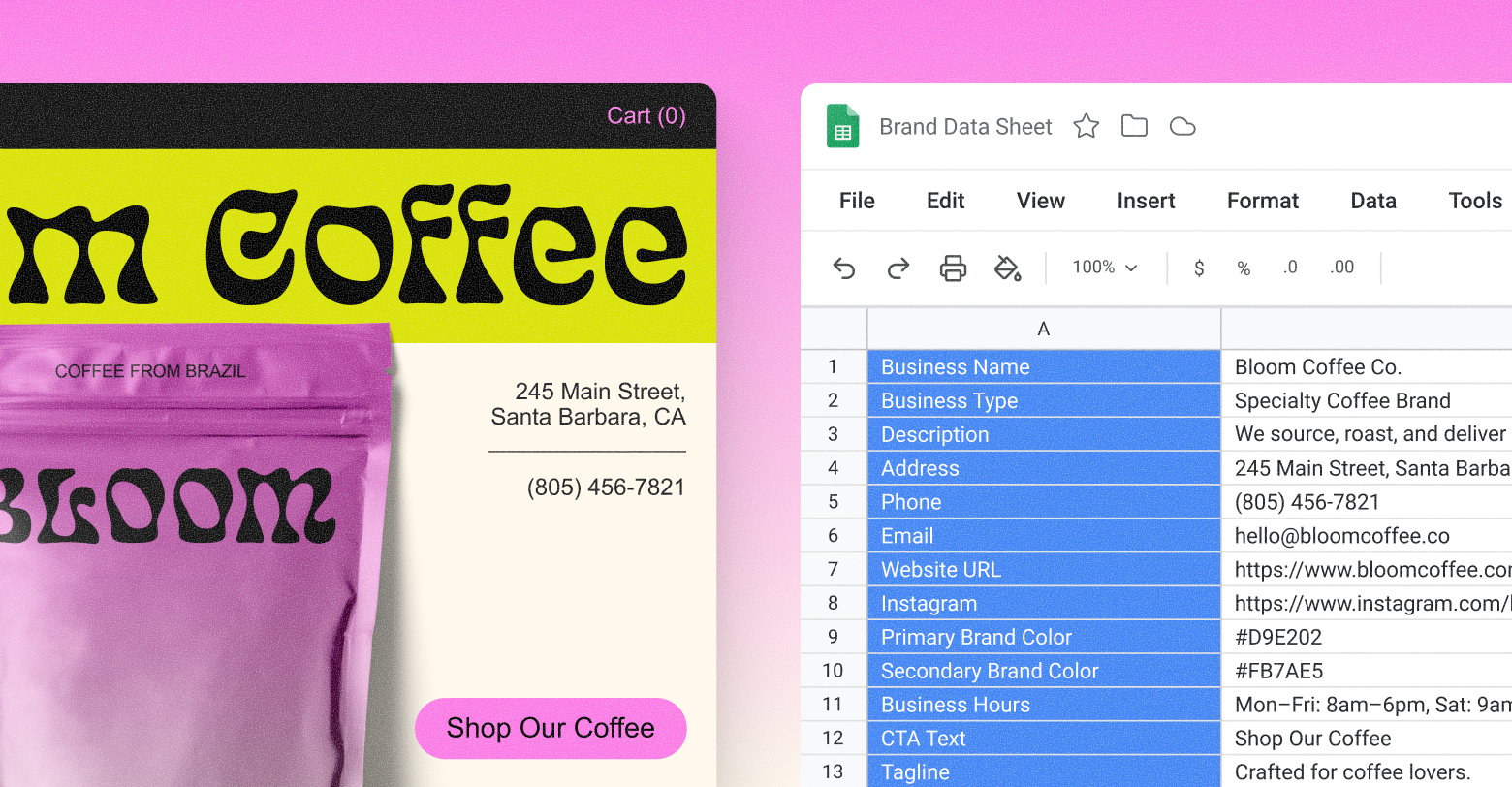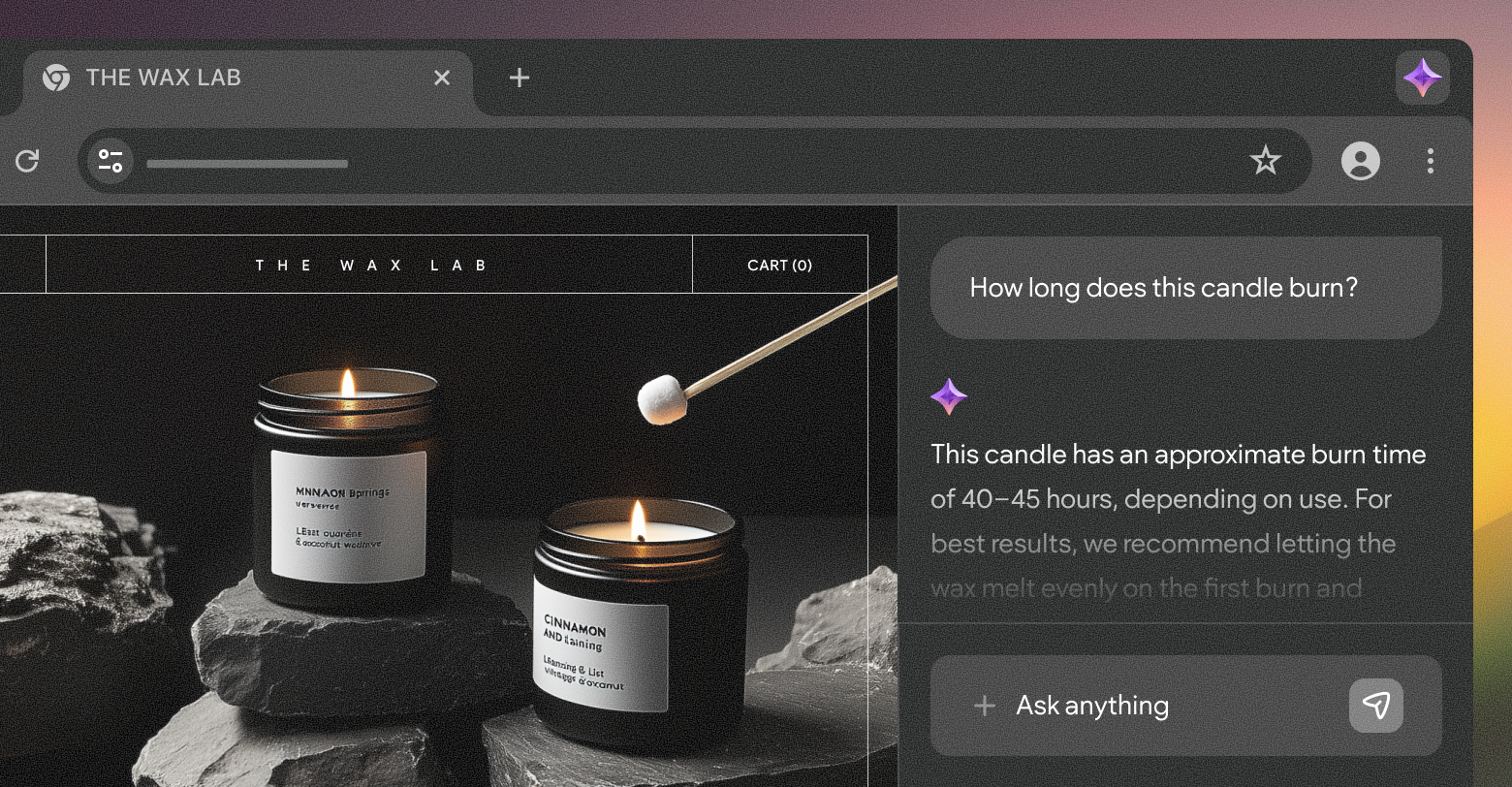Training AI for authentic brand voices
Automation, however, is only as good as the intelligence behind it. Sturges knew from experience that AI-generated text could sound flat, generic, and lifeless; the kind of content Google flags and audiences ignore. His solution is to train AI dynamically for each client by combining the nuances of human tone with structured data.
“For every prompt, we train the AI,” he says. “We pick an author that Google knows, one whose voice fits the company’s tone, and then mix that with emotional brand traits like ‘confident’ or ‘approachable.’”
He’s careful to clarify that this isn’t about impersonation or style mimicry. Instead, it’s a way of aligning the model’s natural rhythm with a recognizable human cadence. “If the author comes up in an author box in Google results, then the AI usually has enough information to model their voice,” he explains. The result is content that reads as distinctly human, tailored to the client’s brand and infused with personality.
This method also simplifies revisions. Instead of line-editing text or chasing commas, Sturges adjusts the underlying data. “If the client says something’s wrong, we tweak the bullet points about that service and regenerate it via API,” he says. “It’s faster and more accurate than editing by hand.”
Even small updates, like replacing photos or minor text changes, flow seamlessly through Duda’s comment boxes. “I love that feature,” he says. “WordPress still doesn’t have anything like it.”
Dynamic pages, smarter SEO
The heart of Sturges’s innovation lies in how he combines AI-driven content creation with structured SEO. Each client’s services and service areas are prioritized early in the onboarding phase, not just for site navigation but for search optimization. “We standardize on six core services,” he says. “Those become the backbone of the homepage and the rest of the site.”
During strategy sessions, Sturges and his clients analyze search behavior live, adjusting terminology to match how real users look for those services. “You might call it ‘roof restoration,’ but people in your area are searching for ‘roof repair,’” he explains. “We make sure they align with search intent and local demand.”
From there, AI prompts are automatically populated with the right keywords, tone, and metadata. The generated content is both readable and optimized. “Our prompts write the content and include all the SEO,” Sturges says. “We can pump it right into Duda’s backend fields, titles, meta descriptions, alt tags, everything connects.”
The structure also allows for strategic use of FAQs, a surprisingly effective SEO and UX element. “We use FAQs to add depth without overwhelming the page,” he says. “They’re expandable, so the layout stays clean, and we’ve seen them help our clients show up in AI search results too.”
Converting manual labor into AI symphonies
For Sturges, this efficiency drives measurable transformation. “Compared to WordPress with an overseas team? Oh my God,” he laughs. “We used to have 11 people. Now it’s just my wife, me, and a couple of part-timers handling support.”
The workflow that replaced those extra hands is a feat of engineering. When clients submit data through an intake form, it lands in GoHighLevel, where fields can be easily reviewed or updated. That data is then exported to a Google Sheet, the central hub of Sturges’s automation.
Each row represents a client, with fields for brand voice, target audience, services, colors, tone, and more. Those variables feed directly into complex prompts that guide AI writing tasks. “It’s like creating a custom GPT for every client, but instead of building a model, we’re building a highly detailed prompt,” he says.
Once generated, the content travels automatically into Duda, either through collections or business text fields, filling in entire websites in a fraction of the time. The system even handles press releases, blog posts, and social media updates. “Everything talks to either Duda or GoHighLevel,” Sturges explains. “That’s it. Two platforms. Simple, efficient, and fast.”
The dynamic master template
Perhaps Sturges’s most powerful invention is what he calls the “Dynamic Master Template.” In essence, it’s a single, modular Duda site that every client website connects to.
“Instead of using different templates all the time, we have one master template,” he says. “If we need to change the design, we do. But all the grunt work, the service pages, social links, calls to action, that’s automated.”
This master template houses an intricate system of connected data fields, standardized sections, and reusable modules. When new client data is uploaded, those fields populate automatically, generating a unique but structurally consistent website.
“We can literally build fifteen service pages in five minutes,” Sturges says. “They read differently, and they rank. It’s a massive time-saver.”
The template also makes updates trivial. “If I change a form in GoHighLevel, it updates across every page of the site,” he says. “No more clicking through hundreds of instances.”
For agencies using Duda, Sturges’s system offers a vision of what’s possible. “I call it agency efficiency,” he says. “You can get more done, faster, and stay focused on strategy instead of production.”
Human strategy with automated execution
Sturges’s method doesn’t eliminate creativity, rather, it amplifies it. By automating repetitive work, he frees himself to focus on brand positioning, conversion strategy, and messaging.
The process begins with what he calls a “conversion framework,” a page structure designed to highlight a client’s value proposition instantly. “We’ve tested it,” he says. “It converts, it ranks, and it generates quality leads.” Each new client site inherits that structure automatically, with the AI generating copy that fits into pre-set character limits and tone guidelines.
That alignment between design and content is the true innovation. “If you design your page ahead of time, you can structure the prompts to match,” he explains. “Then you never have to rewrite the layout for each client.”
Even the creative flourishes are handled efficiently. Sturges saves sections of sites, from hero images to testimonials, in a library that can be pulled into new designs instantly. “They’re connected,” he says. “When I reuse a section, it automatically populates the right images and text.”
Empowering clients and agencies alike
The ripple effects of this automation extend far beyond time savings. For clients, it means faster launches, consistent branding, and better long-term performance. For Sturges’s agency, it’s a complete repositioning.
“This isn’t just about standardizing a process,” he says. “It makes your clients stick around longer and positions you as a consultant instead of just a web designer.”
That shift has opened up new business opportunities. “When clients start seeing you as a consultant, they ask for your advice on everything,” he says. “It opens the door to retainers for SEO, press releases, content—all powered by the same onboarding data.”
Sturges’s philosophy blends high-touch client care with high-tech efficiency. The balance allows him to operate at a scale that once required a full team while maintaining a personal connection with every client. “It’s the best of both worlds,” he says. “Human relationships upfront, automation on the backend.”
A framework for the future of agencies
At its core, Sturges’s system is about rethinking what an agency can be. Many web designers, he says, still spend too much time clicking, copying, and formatting; all work that machines can handle. The real value lies in the strategic layer: understanding audiences, crafting messaging, and building trust.
“When you get out from under the crush of too much clicking and work,” he says, “you rise above it. Suddenly, you’re a consultant, not just a web designer.”
That shift also has personal meaning for him. Sturges’ deeper drive is a passion for systematizing creativity, finding ways to scale quality without sacrificing authenticity. “I like this work. I really do,” he says. “But, you know, after doing it for so many years, your hands start to wear out. So, what can I do to save the things that just take time and clicks.”
Sharing his knowledge
Sturges isn’t protective of his methods. In fact, he’s eager to share them. He mentors other designers informally, showing them how to combine AI tools, APIs, and Duda’s ecosystem into cohesive workflows. The response, he says, has been overwhelmingly positive. “Everyone I’ve shown the dynamic master template to says, ‘Oh my God, we’re doing that,’” he says. “It’s just such a lightbulb moment.”
As automation continues to transform creative industries, Sturges’s model points to a future where small agencies can operate with the sophistication of much larger ones, not by hiring more people, but by designing smarter systems.
“The tools are there,” he says. “You just have to connect them.”










